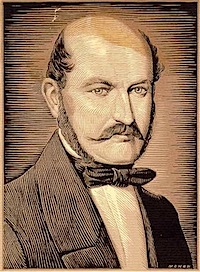Learning from Ignaz

Two observations on the story of Ignaz Semmelweiss:
1. Semmelweis was passionately engaged and humble enough to learn.
He wanted to save lives. He did not accept current reality. He was a driven man. He knew what his mission was—save lives. And he did something about it. He did not come with preconceived notions of how it was to be done. He learned by doing and reflecting not by theorizing.
Clear, and passionately committed to the cause, but teachable and flexible in how to get the job done. In contrast his colleagues were indifferent to the suffering of the women and rigid in their methods.
2. Semmelweiss faced relentless opposition.
The medical establishment did not want to know about his breathtaking achievements in saving lives. They opposed and ridiculed his methods despite his clear, consistent and repeated successes. It was not until the weight of evidence was overwhelming that the medical profession accepted Semmelweis’ methods.
Thomas Kuhn, studied the history of science to see how a new scientific paradigm triumphed over an existing one. The new paradigm does not prevail by convincing its opponents, it triumphs because its opponents eventually die and a new generation grows up that embraces the change. The first to pursue and accept the new paradigm were typically young or new to the field; they did not have much invested in the existing way of seeing things. As we have already noted, breakthroughs in any sphere of human endeavor occur on the fringe, not at the center.
What should we do with this?
Get passionate and keep learning. Make sure you are clear about the cause and desperate to adapt to make it a reality. Expect opposition. Keep asking yourself, What does success look like? How will I recognize it when I see it? How can I multiply what’s working?
What’s my cause? Godly leaders, multiplying churches that make disciples. Everywhere. That’s what I look for, and when I find it I ask, “Why?” and then I ask, “How can we get more of this?”
This year I'm praying and working for 10-15 multiplication hubs around Australia—church plants that reach lost people and multiply, no matter what their size. The lessons we learn from these will be invaluable for the wave of church plants.
